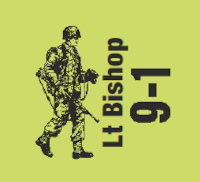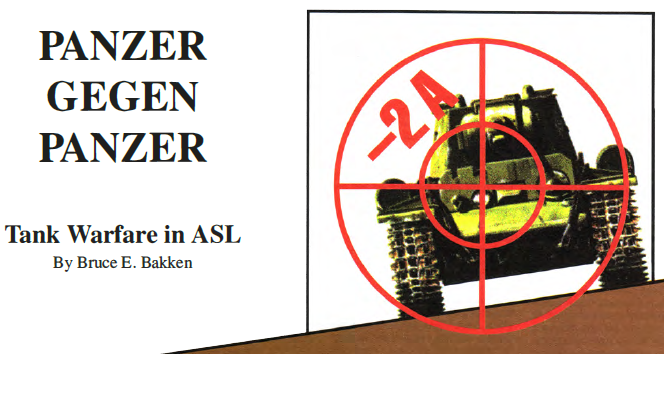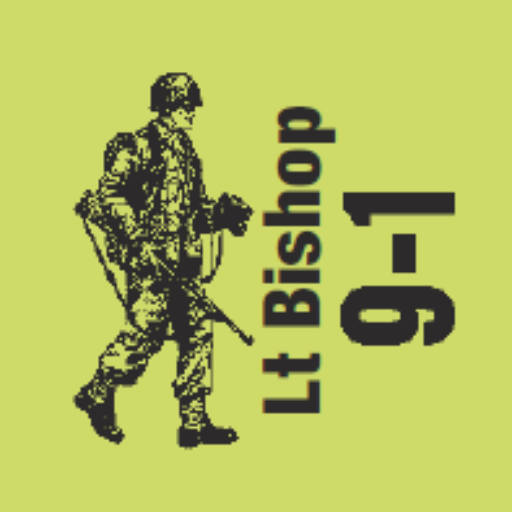
A discussion about armored warfare broke out recently on the ASL Discord server. People began discussing tactics and articles covering the topic. Inevitably the discussion turns to Bruce Bakken’s seminal article Panzer Gegen Panzer: Tank Warfare in ASL. Historically, I have been critical about portions of this article. As I was supporting my position it occurred to me, I should probably do this here on my blog. What follows is my thoughts on this gem of an article.
A Word About My Intentions
This will not be about me thrashing this article. I actually agree more with Bruce’s thoughts than I disagree with them. My disagreement is mostly about a definition of terms and a mindset apparent throughout the article. Even though I think these are in error, Bruce still puts into print the crux of my position. He still gets to where I am going to take you. Panzer Gegen Panzer (PGP) serves as a topic starter here.
At The Point, a now defunct ASL newsletter, originally serialized this article. Avalon Hill republished it in the ASL Annual 93a. These early versions were based on some rules which changed. For Out Of The Attic #2, MMP asked Bruce to update this article to comply with the current rules. It is this version of the article which I will speak to.
I really like this article because it is thought provoking. The first time I read it I had to really think about the game and how ASL models AFV. As my understanding of ASL increased, I occasionally came back to this article and re-read it. I did not come to my conclusions overnight. It took me years to explore the depths of what Bruce wrote and to find my own thoughts on the subject, something I am sure Bruce would be happy to hear.

What I Agree With
In summary, just about everything. Seriously, the article is that good. There is very little to quibble about. Bruce’s rule citations are relevant, timely, and well explained. His usage of the rules is spot on. As a new player, if you follow Bruce’s suggestions, your play will definitely improve.
What I Disagree With
Generally it boils down to two things: Bruce’s definition of “Engagement” and the resulting mindset that comes from it. How he defines an Engagement leads to the second point, the mindset. It is this mindset which I think holds people back from getting the most out of their AFV.
Even with these, Bruce gets the points I am going to make into his article. He is aware of these issues. He just really never addresses them and I think this is because of his definition. With that in mind, I will propose a new definition and a slightly different way to think of his article which I hope better explains my position.
PGP’s Engagement
Bruce declares a tank has “engaged” another tank once it places a -1 Acquisition counter on its target. The “Engagement” forms when the enemy places a -1 Acquisition back on the original shooter. Bruce then provides his three rules of engagements:
- Take the First Shot
- Take the First Shot of the Engagement
- Take More Shots than the enemy
Later in the article, Bruce says “… it must seem that the successful tank commander adopts a primarily defensive posture during an armored battle.” This is precisely what happens if you adopt Bruce’s Rules of Engagement and flow from his definitional position. You shy away from exposure seeking the first shot. As I have said elsewhere, this doesn’t work as the attacker. The attacker has to fabricate the win. You can’t just sit still and expect the win like the Defender can.
Entrenching A Defensive Mindset
Bruce says “… following the Rules of Engagement and through judicious use of mobility, a tank tends to behave very much like a hunter stalking its prey.” This works well if the “prey” can’t harm your tank. You’re not exposing yourself to the first shot or putting yourself into position to give your opponent more shots that you take.
Last, since Bruce defines engagements in terms of Acquisition, his Rules of Engagement discourage Bounding First Fire shots since they don’t place Acquisition. Bruce labels this “nothing more than a hit-and-run tactic, intended to destroy the target in passing rather than become involved in a perhaps lengthy Engagement.”
This is the crux of my disagreement. I think Bruce’s definition of an Engagement leads to static, defensive play. The idea it is better to be involved in an Engagement rather than destroying your enemy outright is detrimental to your success as an attacker. If you are Defending, by all means: follow Bruce’s Rules of Engagement. But if you are Attacking, you need a different mindset and that starts with a renewed definition of Engagement.
Pre-Game Study
It is important to know the capabilities of your and your enemies tanks before you start play. You need to have a good understanding of what his To Kill Number (TK#) is and how it compares to your Armor Factors (AF). These two numbers govern the odds of a hit eliminating your tanks. Nothing you subsequently do can change this. All of your actions are before the shot, ensuring his possible incoming fire will strike your strongest AF. No matter how unlikely the hit was, if it gets to this point, you are relying on the dice to favor you.
A New Meaning For Engagement
I believe the engagement starts the moment I decide to destroy your tank. That could be in this instant, it could have happened last turn, it could be because of something that has occurred that makes it reasonable to attack that AFV. The attacking mindset is looking for opportunities to advance to victory.
The key to decision making recognizes opportunities where the odds are in your favor or the need is pressing based on the Victory Conditions. The risks you take at the end of the game may be greater than the risks you take at the beginning of the game. With that in mind, here are my Rules of Engagement.
Jim’s Rules of Engagement
- Recognize the Opportunity
- Maneuver to Tip the Odds
- Take the First “Best Shot”
- Be Prepared To Adapt on the Fly
Let’s examine each of these in turn.
Recognize The Opportunity
This is perhaps the hardest part of the equation. You need to understand the rules and how to apply them. You also need to know the relative power of each side’s Order of Battle. What you’re looking for is a “reasonable” chance to eliminate the enemy AFV without spending more than you are willing to for that outcome. Sometimes, it may cost you a tank or two to eliminate that Panther. That’s a fair cost if you have the AFV to spare to pay the butcher’s bill.
“Reasonable” is also hard to define but the Victory Condition will guide you. If I need to have a tank with a functional MA at game end, then it better be nearly certain that I am going to have at least one tank left and eliminate the enemy tank. Early in the game, I might be unwilling to accept anything less than an 80% chance. Later in the game, desperation may lead me to accepting a 20% chance.
In all cases, the decision is driven by the Victory Conditions and where I am in the game. Destroying an enemy tank is not the goal (it can be). Winning the game is. We must make all decisions in that light.
Tip The Odds
Bruce points out in his article that we as tank commanders decide where and when to attack an enemy tank. We can force the enemy tank to take a bad shot through a complete understanding of the rules. As the Bounding First Fire AFV, we will face a minimum of a +4 To Hit (TH) Dice Roll Modifier (DRM). This means we need an Original DR6 TH (41.67%). Assuming we have a To Kill Number (TK#) of 17 against an Armor Factor (AF) of 11, a hit has a 41.67% chance to eliminate or Shock the enemy tank. Taken together, we have a 17.36% chance to eliminate the enemy tank.
In contrast, an enemy tank with a 14 TK against our 6 AF and a +3 TH DRM has a 42.12% chance to eliminate/Shock our tank. The enemy tank is nearly 2.5 times more likely to eliminate our tank than we are his and he shoots first. This is likely not the best opportunity unless you have more tanks to press the action.
Instead, imagine you approached the enemy tank from outside its TCA. Now the +3 TH DRM becomes a +5. Now the enemy tank eliminates/Shocks our tank ~20% of the time. We have cut his chances nearly in half. If the enemy AFV is in a Wood/Building Location, his Case A DRM are doubled. This ties our own shooter-based DRM. If the enemy tank is also BU, we would win a Gun Duel (+4 vs. +5 Shooter-based DRM). Even if the enemy tank is CE, it would tie us on DRM and a “roll off” occurs. This “roll off” favors our tank since we have fewer total DRM.
Take The First Best Shot
Your goal here is to take a shot more likely to Shock/eliminate the enemy AFV than it is to do the same to yours. You can risk nearly equal chances if you’re willing to accept he will likewise shoot first. If you do this, you must declare a Gun Duel on his shot if you can even if you know you will lose the Gun Duel. If you survive the first shot, declaring a Gun Duel ensures you shoot next no matter how many units he has capable of shooting your tank. You must also be aware that ROF and Intensive Fire will work against you. The Victory Conditions and timing of the game should decide this.
For example, If we approach his AFV from the side, our first shot may hit a weaker Armor Facing. This increases our chance to eliminate the enemy AFV. As the combination of TH DRM and TK/AF comparisons change in our favor, we reach a point where we take the First “Best Shot”. If we add to this a swarm of multiple tanks engaging the same vulnerable target, we can get multiple chances to successfully eliminate the enemy AFV.
Be Prepared To Adapt On The Fly
Every action on the board changes the situation. Each change in the situation effectively creates a different cost/benefit analysis. If an enemy tank changes TCA/VCA in a Wood/Building and fires, it may not change its TCA/VCA again. If it fires, it can no longer make a Motion Attempt or try for a Smoke Dispenser. These activities may influence your following actions. Noting these changes is the tenet of Rule 1: Recognize the Opportunity.
Some activities will work against you. You are prepared to lose two AFV to eliminate a Panther, risking one to First Fire and one to an Intensive Fire shot. Except the Panther maintained ROF on the first shot. Now you are looking at losing three AFV. Perhaps it is time to call off the swarm and figure out another way. An MMC with a BAZ can ruin a Panther’s day just as well as your tank can. The MMC can rout though, your burning AFV cannot.
A Brief Aside
| Gain / Loss | Gain / Loss | ||||
| Modified TH# | Chance to roll ≤ | “-1 DRM” pct (frac) | “+1 DRM” pct (frac) | “-2 DRM” pct (frac) | “+2 DRM” pct (frac) |
| 2 | 1/36 (2.78%) | 5.56% (2/36) | – | 13.89% (5/36) | – |
| 3 | 3/36 (8.33%) | 8.33% (3/36) | 5.56% (2/36) | 19.44% (7/36) | – |
| 4 | 6/36 (16.67%) | 11.11% (4/36) | 8.33% (3/36) | 25.00% (9/36) | 8.33% (5/36) |
| 5 | 10/36 (27.78%) | 13.89% (5/36) | 11.11% (4/36) | 30.55% (11/36) | 19.44% (7/36) |
| 6 | 15/36 (41.67%) | 16.67% (6/36) | 13.89% (5/36) | 30.55% (11/36) | 25.00% (9/36) |
| 7 | 21/36 (58.33%) | 13.89% (5/36) | 16.67% (6/36) | 25.00% (9/36) | 30.55% (11/36) |
| 8 | 26/36 (72.22%) | 11.11% (4/36) | 13.89% (5/36) | 19.44% (7/36) | 30.55% (11/36) |
| 9 | 30/36 (83.33%) | 8.33% (3/36) | 11.11% (4/36) | 13.89% (5/36) | 25.00% (9/36) |
| 10 | 33/36 (91.67%) | 5.56% (2/36) | 8.33% (3/36) | 8.33% (3/36) | 19.44% (7/36) |
| 11 | 35/36 (97.22%) | 2.78% (1/36) | 5.56% (2/36) | 2.78% (1/36) | 13.89% (5/36) |
| 12 | 36/36 (100%) | – | 2.78% (1/36) | – | 8.33% (3/36) |
Not all DRM are equal. I have said this many times. Refer to the chart above while we discuss this. The left-most column represents the Modified TH# while the second column shows the chances to roll less than or equal to that sum. The next four columns explore the impact of a +/- 1 and a +/-2 DRM on rolling a Final TH DR ≤ to the Modified TH chance.
Understanding The DRM Table
For example, if you need a Modified TH# of 5 and have a +1 DRM, you need to roll an Original TH DR of 4. This means any sum of the dice totaling a 5 are no longer successful (4/36). Your chances of hitting dropped from 27.78% to 16.67%. This is nearly a ⅓ reduction in the chances of being hit. Compare this to Modified TH# of 10 with the same +1 DRM. Now, any sum of the dice totaling to 10 is unsuccessful (3/36). This is an 8.33% reduction from an original 91.67% chance to hit. The same +1 DRM has less of an impact at this end of the curve. Your tank is still likely to be hit. And if the enemy hits, you are relying on the dice to favor you in the TK DR. The swings are even more wild on the +/- 2 DRM columns.
What you should take from this table is how impactful the DRM are in the middle of this table. A Modified TH# of 6 to 8 can swing 13.89% – 16.67% on a simple +1 DRM. While the +1 DRM on a Modified TH# of 8 still means you’re more likely to be hit than not, it is much closer to a coin flip than it is without a +1 DRM. Starting at a Modified TH# of 7, the odds just tilt further in your favor with the DRM having a larger and larger relative impact. This is where you control the odds of the engagement.
After The Shot
What you do after the shot depends on your intentions. If you intend to stand with multiple tanks facing off against his tank, there is no need to get out of the line of fire. If instead, you have other places to be, then driving by and taking a chance of eliminating his tank may be a risk worth taking. The end goal of your plan is to fulfill the Victory Conditions. That may or may not include destroying his AFV.
If your tank can force his tank to move, you can fall back to Bruce’s Rules of Engagement and be very successful. But in the end, as the attacker, applying pressure may force him to change his deployment.
Giving Credit
Bruce said much of this in his article as well. He acknowledges you may have a “… strategy to destroy the enemy before an Engagement actually develops …” and may be accomplished by “… firing at him during your MPh.” He even states “There is no greater penalty for firing during the MPh than if you had waited until the ensuing AFPh.” Bruce clearly sees the opportunities I have discussed here, he just says it is a “hit-and-run tactic” and “… chances are quite good the enemy would get the first shot at you during the MPh” downplaying the tactic. While all of that is absolutely true, he does not combine it with his other observations on DRM changing the odds. The combination of changing the odds and exposing your AFV to fire can position your AFV to have a better chance of eliminating his AFV than he has of eliminating yours.
Nuggets Of Modern Play
Bruce didn’t say this directly, but he hinted at the DRM as your armor. He said “A more practical way to avoid fire is to influence which of the TH DRM the enemy must apply to his shot.” This is the leap I eventually made that leads me to quibble with his otherwise outstanding article. If we can change the odds on the TH DR to favor our attack, we are creating the environment for a successful attack.
This success begins with recognizing the opportunity and maneuvering to create conditions favoring our success. That is what I think of when I think about an Engagement. It has nothing to do with placing Acquisitions. It has everything to do with eliminating his AFV at a cost I am prepared to accept while taking risks I am prepared to take. And if it all goes pear-shaped, recognizing the engagement must be called off because of the changing circumstances.
There is nothing revolutionary in this article. I can find every point I make above in Bruce’s original work. It took me years to feel like I grew beyond it. And really, I don’t think I grew beyond it, I just took different lessons and meaning from the same information Bruce presented. If there were no Panzer Gegen Panzer, I would not have progressed as easily to where I am today.
Conclusion

I highly recommend you read Panzer Gegen Panzer. It is a masterfully crafted article which I place high in the pantheon of all ASL articles ever written. It is just as relevant today as when it first appeared all those years ago in At The Front. Nearly all of what I write here is in Bruce’s article, I have just repackaged it to fit my play style and the modern ASL scenario. When you are standing on the shoulders of giants, original thought is scarce, so it is no surprise to me there is nothing new here.
Still, I hope my slightly different take on his information is informative for you. I hope it helps you to grow and expand your ASL games as much as it did mine. Thanks Bruce. I could not have done it without you. – jim
Afterward
I reached out to Bruce via email and offered him an opportunity to comment. So far, he has demurred citing a move away from ASL. He briefly reflected on our past discussions on his article and then made a point I had long forgotten. ASL was in a much simpler place when Bruce wrote Panzer Gegen Panzer. There was no Internet. There was no global audience readily available to bounce ideas off of. You couldn’t log onto VASL and play someone from the other side of the planet without leaving the comfort of your own desk. ASL was very much an insular thing played among small, isolated groups. Some of that changed with the emergence of ASLOk and other tournaments. All of that changed with the explosion of the Internet.
The way we play the game has changed over the years. We have gone from 40 counter a side, 10+ turn scenarios played across 3 boards, to a ½ board, 10 squads and a tank a side blitz play. The experience of the modern player-base makes historical scenarios feel quaint by today’s standards. Given that context, it is remarkable that Panzer Gegen Panzer remains relevant even today. That’s a testament to Bruce’s forethought and basic understanding about what AFV combat means in an ASL sense. Bruce certainly pushed us forward then, and continues to do so today. Thanks Bruce.

